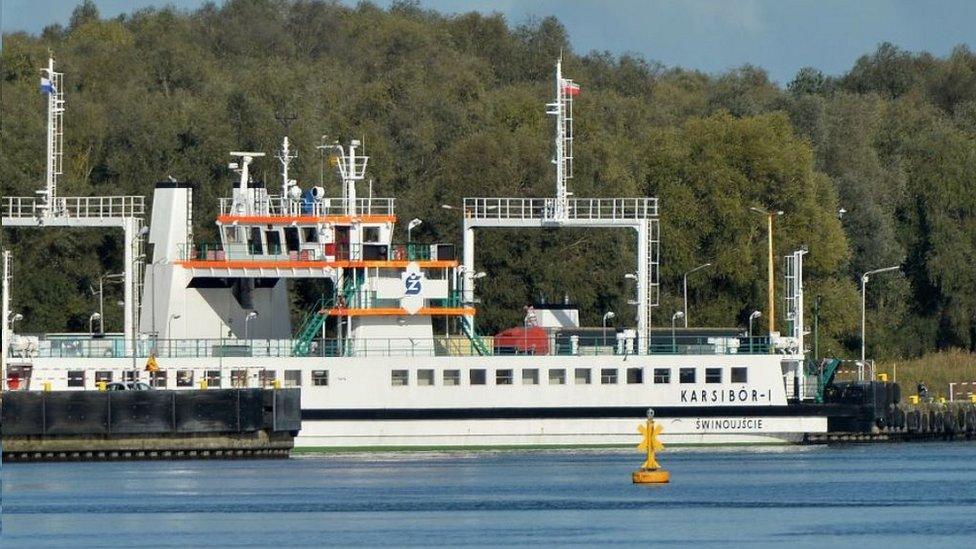Polish divers tackle massive British WW2 bomb in Baltic
- Published

A yellow buoy marks the bomb's location near a ferry crossing
Polish military divers have begun a delicate operation to defuse a giant British World War Two bomb at the bottom of a Baltic Sea shipping canal.
About 750 residents have been evacuated from the area, near the port city of Swinoujscie, and the operation is expected to take five days.
The Tallboy, or "earthquake" bomb, is 6m (19ft) long and weighs 5.4 tonnes, nearly half of which is explosives.
The RAF dropped it in a raid in 1945 which sank the German cruiser Lützow.
The bomb is embedded at a depth of 12m and only its nose is sticking out.

Tallboy bombs were dropped by RAF Lancaster bombers

The charge is to be removed by a remotely controlled device, and divers have already spent days preparing the site. The bomb was discovered during dredging last year.
Poland has never defused such a big bomb underwater before. The Tallboy was a seismic, deep-penetration bomb, designed to fall near a target and destroy it by exploding with a massive shockwave.
The Royal Air Force dropped such bombs in 1944-45, using Lancaster bombers, and the Nazi V-rocket launch sites were among the targets.
Poland was one of the most heavily bombed countries in the war - the capital Warsaw was left in ruins by the Nazis.
A controlled explosion is considered too dangerous at the Baltic bomb site, because it would cause a massive seismic shock that could damage property far away, the BBC's Adam Easton reports from Warsaw.
Some local residents refused to go to a temporary shelter in a sports hall for fear they could catch the coronavirus.
Read more about unexploded WW2 bombs:
- Published31 August 2019
